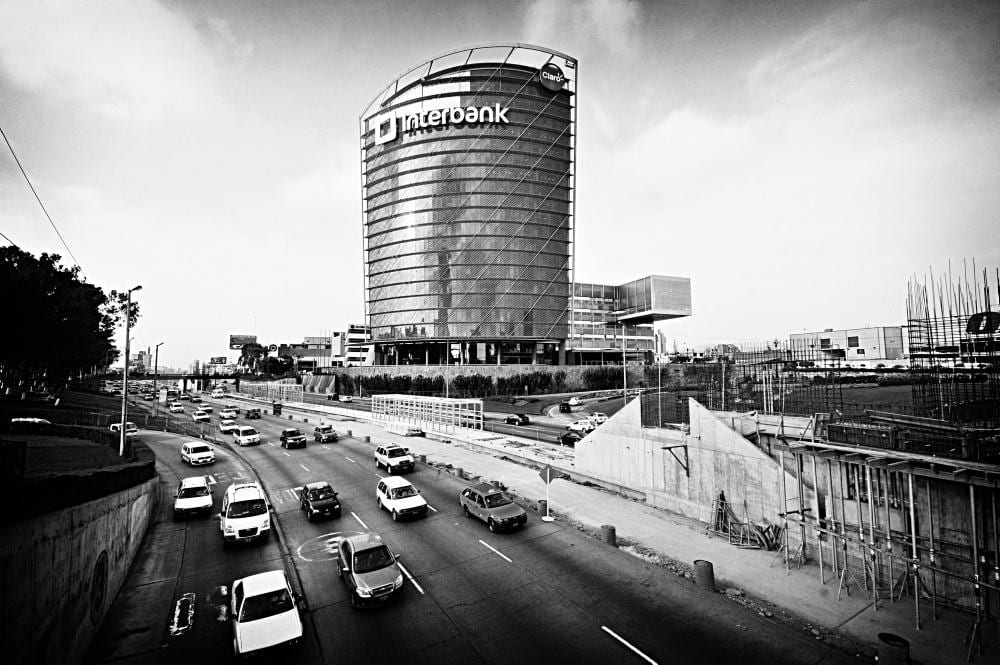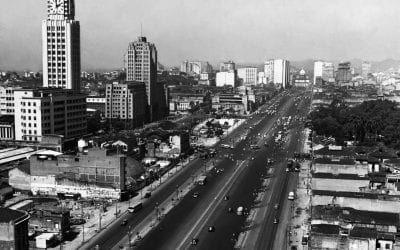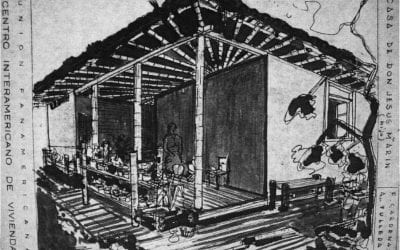Modernity in Peru
A Photo Reflection

The Edificio Interbank is a building in the Victoria district in Lima. Inaugurated in 2001, it is headquarters for Interbank, a Peruvian financial entity. The building spawned the growth of a financial district in San Isidro.
When one thinks of Peru, one might think of colonial plazas or the splendid pre-Columbian Incan masterpiece of Macchu Picchu.
Yet, as photographer Marco Simola portrays with his compelling architectural photos, Peru is also architectural modernity, a cutting-edge medley of buildings.
The past, however, is not left entirely behind. The Interbank Building, which Wikipedia calls one of the thirteen most spectacular buildings in the world, uses Andean volcano rock in its entrance, drawing on an ancient Incan tradition.
The Peruvian firm Cosapi constructed the building with a design by Austrian architect Hans Hollein. The building was inaugurated around the same time as the architect’s Media Tower in Vienna, with both projects being designed simultaneously.
The Interbank building has two distinct towers that are interlinked. The 20-floor Tower A is slightly tilted, taking on the form of a sail carried by the wind, reinforced by titanium. Tower A soars 289 feet into the air and is crowned with a heliport. Tower B is a six-floor retangular construction with outside walls of white glass, looking in to offices and a cafeteria.
The tilting of the first tower is not only for aesthetic effect, but is an anti-seismic device developed by Carlos Casabonne Rasselet. The plaza in front of the buildings is constructed with volcanic rock, in accordance with ancient Peruvian tradition.
Wikipedia has named the Interbank Building as one of the 13 most spectacular in Latin America.
Spring | Summer 2010, Volume IX, Number 2
Marco Simola is an Italian-born photographer who lives and works in Peru. He can be reached at marco.simola@gmail.com.
Related Articles
A Tale of Three Buildings
Greek columns, in Thomas Jefferson’s designs for the University of Virginia, might evoke democracy. In Albert Speer’s designs for Berlin during the Third Reich, similar columns serve to…
Poverty and Poverty Alleviation Strategies in North America
The eight essays in this volume, coedited by Mary Jo Bane, Thornton Bradshaw Professor of Public Policy and Management at the Harvard Kennedy School, and René Zenteno, Professor at…
Productive Workers for the Nation
In 1954, Colombian architect Alberto Valencia took a short trip to the small town of Anolaima, two hours away from Bogotá. An architect at the Inter-American Housing Center—a joint project…




